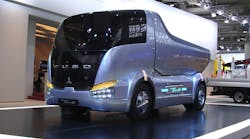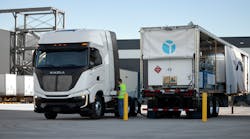A significant portion of energy generated through fuel combustion in an engine is wasted, notes Bob Johnson, the recently retired fleet operations director for NTEA, the Association for the Work Truck Industry. The primary sources of thermal energy loss are through the engine cooling system and the exhaust system.
“Considerable work was done in the 1980s and 1990s toward developing ceramic engine components which could operate at significantly higher temperatures, thereby increasing an engine’s thermal efficiency. Unfortunately, higher combustion temperatures also lead to increased levels of mono-nitrogen oxides (NOx) in the exhaust stream.
“Since reduction of NOx is one of the major exhaust emission reduction criteria,” he explains, “most work in the use of high temperature engine operation was halted.”
Along with continuing to work on improving engine combustion efficiency, engineers are looking at multiple ways to recover at least a portion of this energy.
TURBOCHARGERS
One of the first steps taken many years ago to recover some of the energy lost through the exhaust system was turbochargers, Johnson says, which operate off of expanding hot exhaust gases.
The typical turbocharger employs a waste gate system to regulate turbo speed and intake manifold boost pressure, he explains. The concept of turbocompounding replaces the waste gate with either a mechanical or an electrical system for utilizing the energy lost through the waste gate.
“The most practical system appears to be to simply couple an electrical generator to the turbocharger and utilize variable field excitation to maintain a constant load on the turbo,” says Johnson. “Any energy generated in excess of that needed to provide intake manifold boost would then be converted into electrical energy that can be utilized on board the vehicle in various ways.”
But even with the use of a turbocharger, the exhaust gasses leaving the vehicle retain a significant amount of energy. Additional heat may be generated in the catalytic converters associated with the exhaust system.
At least two different systems are being developed to capture a portion of this energy, notes Johnson. Both of these systems convert the waste heat into electric energy for onboard use.
One uses thermocouple devices to directly convert heat into electricity. A more complex system utilizes liquids with a low gasification temperature, such as ammonia, to drive a small turbine generator system – the same concept as electric turbocompounding – to extract more energy from the exhaust gases.


